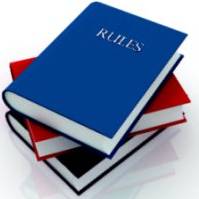How to Get a Mortgage: How Much House Can You Afford?
If you're a first time homebuyer, one of the most important questions to answer is: how much house can I afford? To answer that question, you need to know how much mortgage you can afford. This article will help you understand the mortgage process, and our list of calculators can give you even more insight into the possibilities.
The availability of mortgage financing is obviously important to your purchase plans and each mortgage lender has their own lending guidelines, or Rule Book that you'll need to consider. Different scenarios require different rules. For instance, whenever you have less than 20% down payment, your lender will need Mortgage Default Insurance . So when figuring out how much home you can afford, your mortgage professional must refer to the Rule Books that apply to your specific situation.
The amount of house you can afford depends on a few variables, including:
- Current interest rates
- The employment income that you can document
- Your available down payment
- Your other monthly payment obligations
- Your credit repayment history, as measured by your Credit Score
Other Considerations:
- Interest rates are lower for borrowers with good credentials, which serves to increase the mortgage payment you can afford to pay.
- Required down payments are also lower for borrowers with good credentials, which means you can qualify sooner. For borrowers with less-than-stellar credentials, larger down payments are required because they represent a bigger risk to lenders.
- The income used to qualify for a mortgage may be lower than the would-be purchasers believe they have, because certain forms of income are ineligible.
- The more monthly payments a person has (credit cards, vehicle loans, lines of credit, etc.) the less of their income they have available for the mortgage payment, which serves to decrease how much house they can afford to buy.
Measuring Affordability: The Three Rules
To qualify for the mortgage required to execute a purchase, affordability must be calculated three times using three different rules. I call these the "income rule", the "debt rule", and the "cash rule." The final figure is the lowest of the three. When affordability is measured on the back of an envelope, which real estate brokers often do, usually it is based on the income rule alone, ignoring the other two. This can result in error.
1. The Income Rule ("Gross Debt Service Ratio" or "GDSR")
The Income Rule says that the borrower's monthly housing expense (PITH), which is the sum of the Principal and Interest (mortgage payment), property Taxes and home Heating estimate, cannot exceed a percentage of the borrower's income specified by the lending Rule Books.
For example, if the maximum GDSR is 35% and John Smith's documentable income is $4000/month, PITH cannot exceed $1400. If taxes are $200 and the lender's heating estimate is $100, the maximum mortgage payment is $1100. At 4.0% interest and 25 years amortization, this payment will support a mortgage of about $209,125*. If the borrower, John Smith, has $12,000 for down payment, then the maximum house he can afford to purchase is ~$222,000 using the Income Rule.
2. The Debt Rule ("Total Debt Service Ratio" or "TDSR")
The Debt Rule says that the borrower's total monthly debt payments, which would be the sum of the new house PITH plus Other monthly debt/payment obligations, cannot exceed a percentage of the borrower's income specified by the lending Rule Books.
If this maximum TDSR is 42%, for example, then all of Smith's payments cannot exceed $1680/month. If taxes and heating are $300 while existing debt service is $380 (say a car loan and credit card payment), the maximum mortgage payment is $1000. At 4.0% and 25 years, this payment will support a mortgage of $190,115. Assuming a $12K down payment, this implies a sale price of ~$202,000. This is the maximum purchase price for Smith using the Debt Rule.
3. The Cash Rule (Down Payment)
The required Cash Rule says that the borrower must have cash sufficient to meet the down payment requirement plus other closing costs (lawyer, inspection, appraisal, property tax adjustments, transfer taxes, etc.)
If Smith has $12,000 and the sum of the down payment requirement and other settlement costs are 6% of sale price, then the maximum sale price using the Cash Rule is $200,000.
Since the Cash Rule produces the lowest result of the three rules, $200,000 is the correct affordability estimate for Smith.
Removing Constraints on Affordability
When the Income Rule sets the limit on the maximum purchase price, the borrower is said to be "income constrained". Income constraints can be removed by additional income -- sending a spouse out to work, for example. Or perhaps adding the income of a co-applicant such as a parent.
When the Debt Rule sets the limit on the maximum purchase price, the borrower is said to be "debt constrained". Debt constraints can be removed by repaying debt. -- selling a vehicle for example and discharging the loan.
When the Cash Rule sets the limit on the maximum purchase price, the borrower is said to be "cash constrained". Cash constraints can be removed by adding an additional source of down payment -- a gift from a parent, for example.
Want to know if you're even eligible for a mortgage? Check out our free ebook:

.jpg)